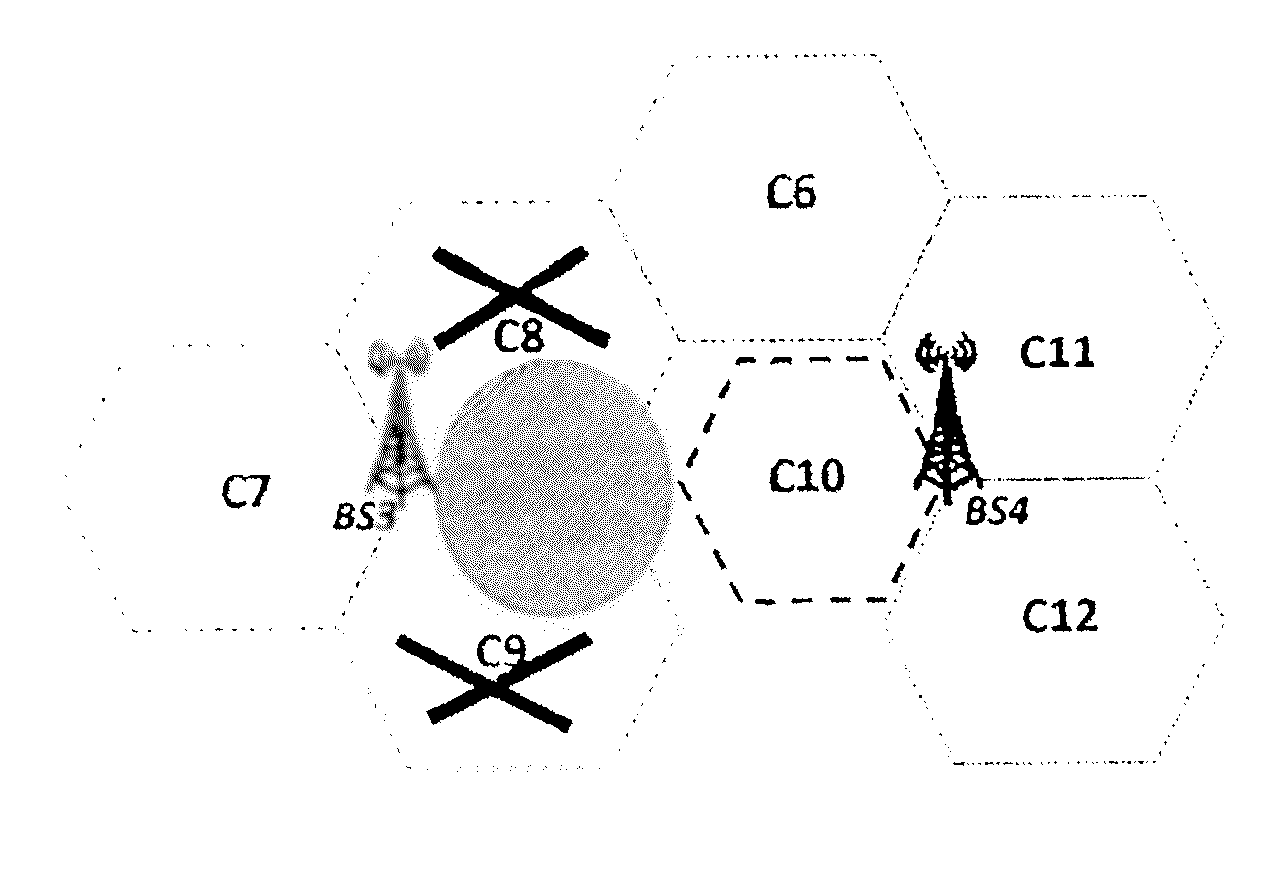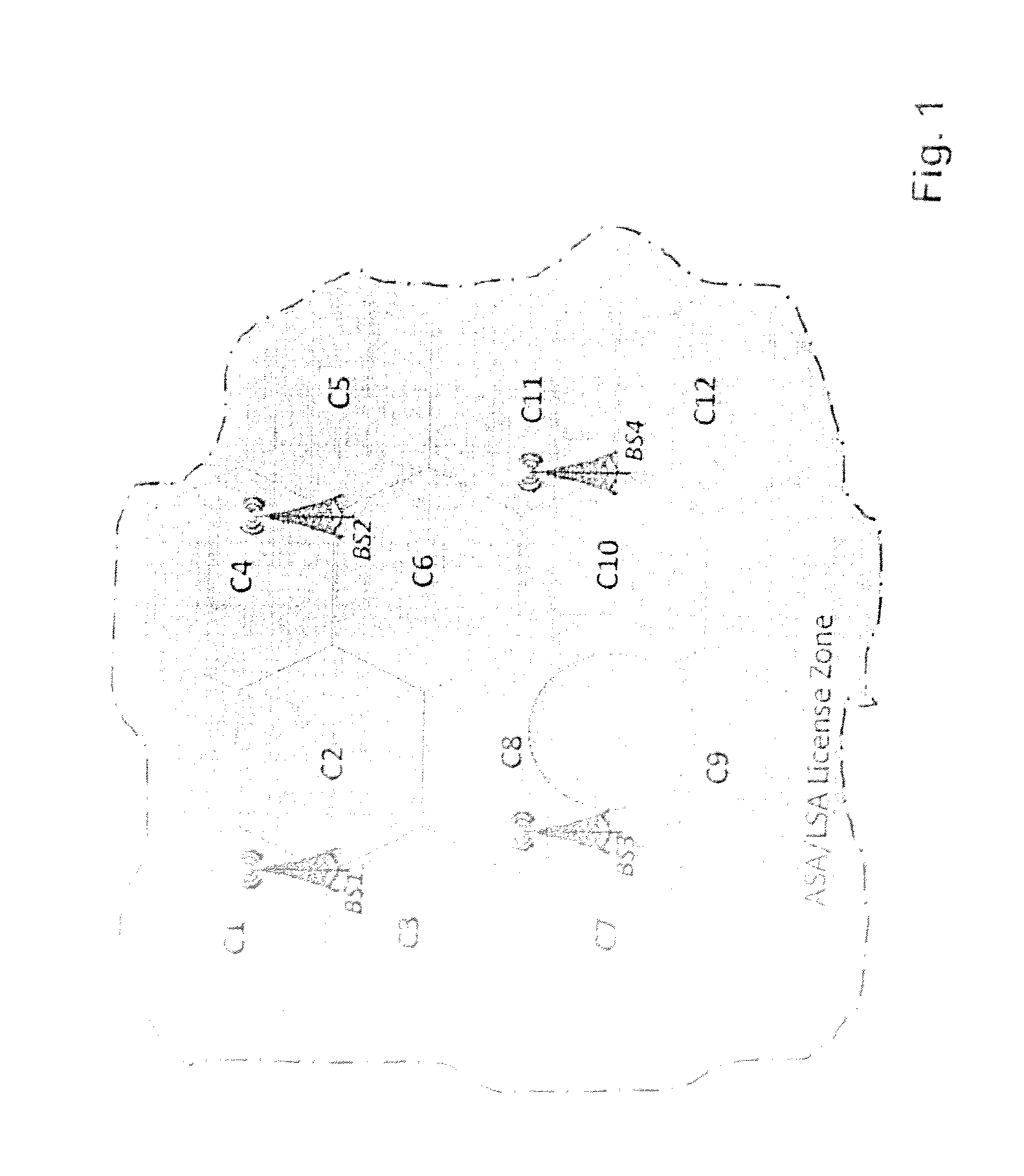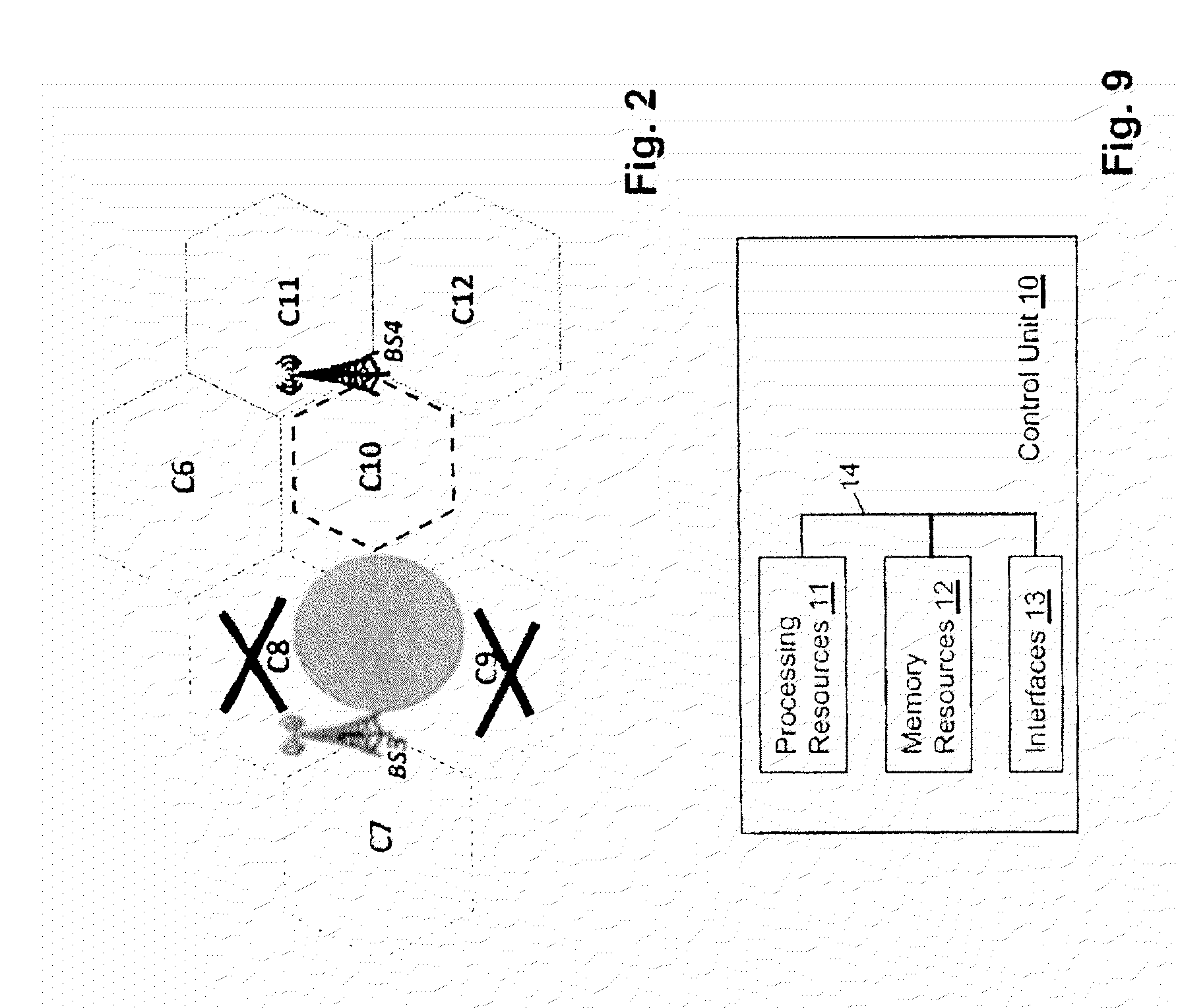Use of Licensed Shared Spectrum in a Radio Access Network Where Signal Propagation is Unknown
a radio access network and shared spectrum technology, applied in the direction of network planning, electrical equipment, wireless communication, etc., can solve the problems of not working in the described process, not being able to prepare a reliable measure to guarantee, and not being able to stay with static configurations. , to achieve the effect of high reliability
- Summary
- Abstract
- Description
- Claims
- Application Information
AI Technical Summary
Benefits of technology
Problems solved by technology
Method used
Image
Examples
Embodiment Construction
[0054]According to an exemplary embodiment of the invention, when a licensed shared access spectrum, e.g. an ASA / LSA spectrum, is to be used with network elements of an access network of a communications network system, with unknown signal propagation, per default these type of network elements are configured in a way not to use the licensed shared access spectrum. The use of the licensed shared access spectrum will be allowed as soon as it is guaranteed that such a network element does not violate agreed interference levels in predefined reservation zones of the licensed shared access spectrum. The interference levels may be defined equal or different for each reservation zone of the licensed shared access spectrum. The use of the licensed shared access spectrum may be not allowed when agreed interference levels in the predefined reservation zones are violated by such a network element. Here a network element may comprise entities such as access points, remote radio heads, base sta...
PUM
 Login to View More
Login to View More Abstract
Description
Claims
Application Information
 Login to View More
Login to View More - R&D
- Intellectual Property
- Life Sciences
- Materials
- Tech Scout
- Unparalleled Data Quality
- Higher Quality Content
- 60% Fewer Hallucinations
Browse by: Latest US Patents, China's latest patents, Technical Efficacy Thesaurus, Application Domain, Technology Topic, Popular Technical Reports.
© 2025 PatSnap. All rights reserved.Legal|Privacy policy|Modern Slavery Act Transparency Statement|Sitemap|About US| Contact US: help@patsnap.com



